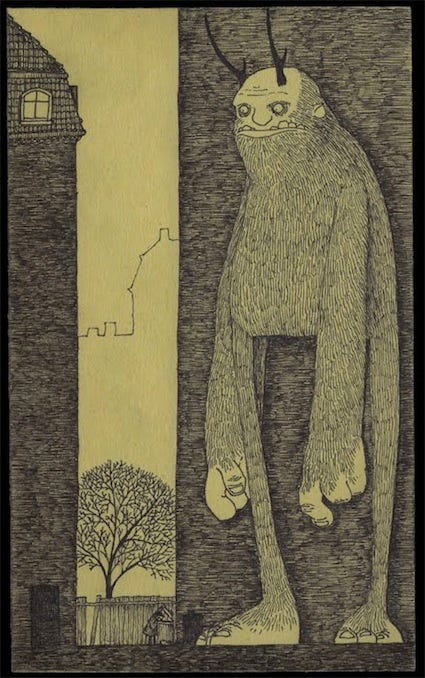WV 11: How not to burn the world down; an introduction to the Rashomon Effect; and a cool, Google tool that lets you ‘talk’ to books!
Also, an artist creates mysterious post-it notes art and Pádraig Ó Tuama on the ‘Strangeness of Art’
A hectic work week and preparations for Diwali meant that i had a lot less time for my usual rambling reading sessions this week. Still, some interesting stuff for you to go through and ponder upon. Hope you enjoy this edition of the Word Vyaasa.
01
“The fossil-fuel industry wants to be able to keep burning something. That way, it can keep both its infrastructure and its business model usefully employed. It’s like an industry of rational pyromania. A decade or so ago, the thing it wanted to burn next was natural gas. Since it produces less carbon dioxide than coal does, it was billed as the “bridge fuel” that would get us to renewables. The logic seemed sound. But researchers, led by Bob Howarth, at Cornell University, found that producing large quantities of natural gas released large quantities of methane into the atmosphere. And methane (CH4) is, like CO2, a potent heat-trapping gas, so it’s become clear that natural gas is a bridge fuel to nowhere—clear, that is, to everyone but the industry. The head of a big gas firm told a conference in Texas last week that he thought the domestic gas industry could be producing for the next hundred years.”
In a World on Fire, Stop Burning Things
https://www.newyorker.com/news/essay/in-a-world-on-fire-stop-burning-things
02
There are a few iconic films that have transcended cinema and impacted culture at large and Akira Kurosawa’s Rashomon is certainly one. Kurosawa’s exploration of truth and its expression in the film led to a term that would be used both in and outside of cinema — the Rashomon Effect. The Rashomon Effect is used in a range of subjects from storytelling to psychology to law. So what is the Rashomon Effect? In this article, we’ll be taking a look at its origins, what it means, and its influence on both film and culture.
What is The Rashomon Effect in Film? Definition & Examples Explained
https://www.studiobinder.com/blog/what-is-the-rashomon-effect-definition/
03
“Have you ever wished you could talk to your books? Or rather, have you ever wished they could talk back?”
A Google tool that lets you ‘talk’ to books!
https://lithub.com/need-a-friend-google-has-a-tool-that-lets-you-talk-to-books/
04
Why did you start this project?
So I wouldn't die. (I know it is a silly answer, but I just HAVE to draw and I HAVE to tell stories and I have to do it fast, and by doing it this way on post-it notes I can get it all out fast, so that I won't stress myself (or bore myself) to death.)
Interview: Mysterious Post-it Note Artist John Kenn
https://mymodernmet.com/interview-mysterious-postit/
05
Art has a strangeness at its heart. A poem doesn’t completely know itself because it’s waiting to be discovered in its discordant engagement with its readers. I celebrate the strange in art, and celebrate the hesitant art of saying, “This is what a poem might mean,” rather than, “This is what a poem means.”
Celebrating the strangeness of art
Poem of the week
“In him the hungry haste of rivers, in me the oceans’ tireless waiting.”




